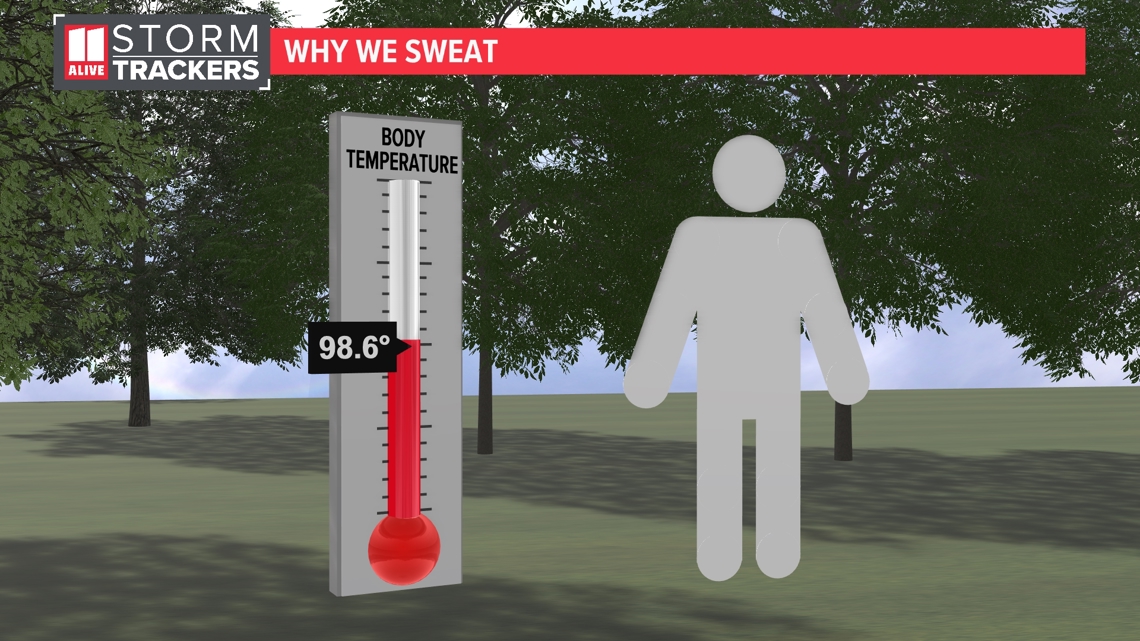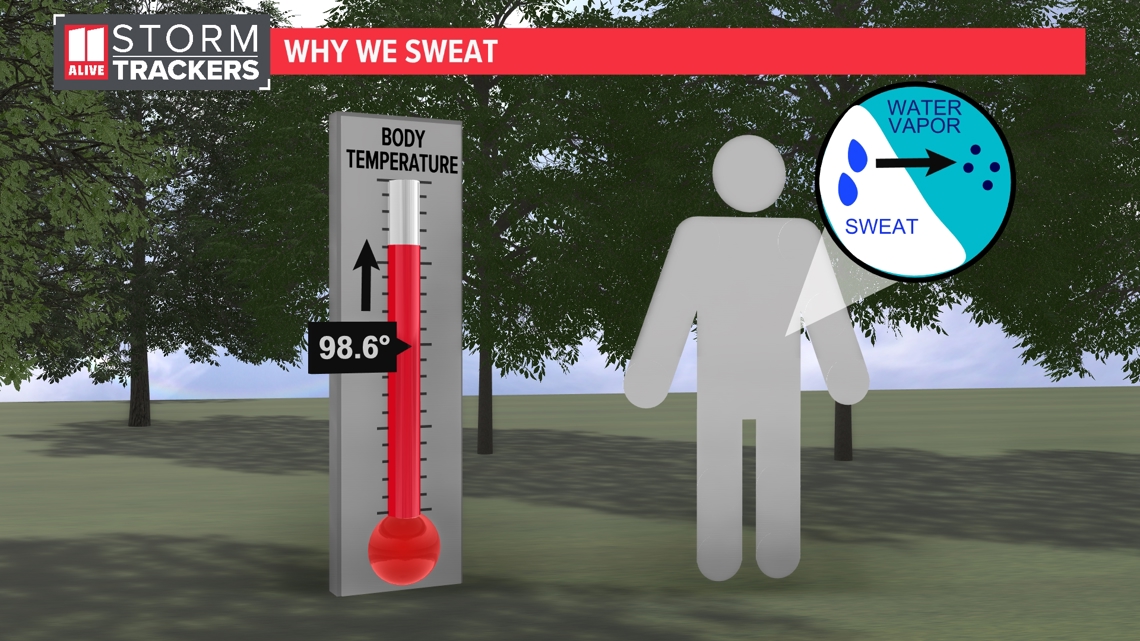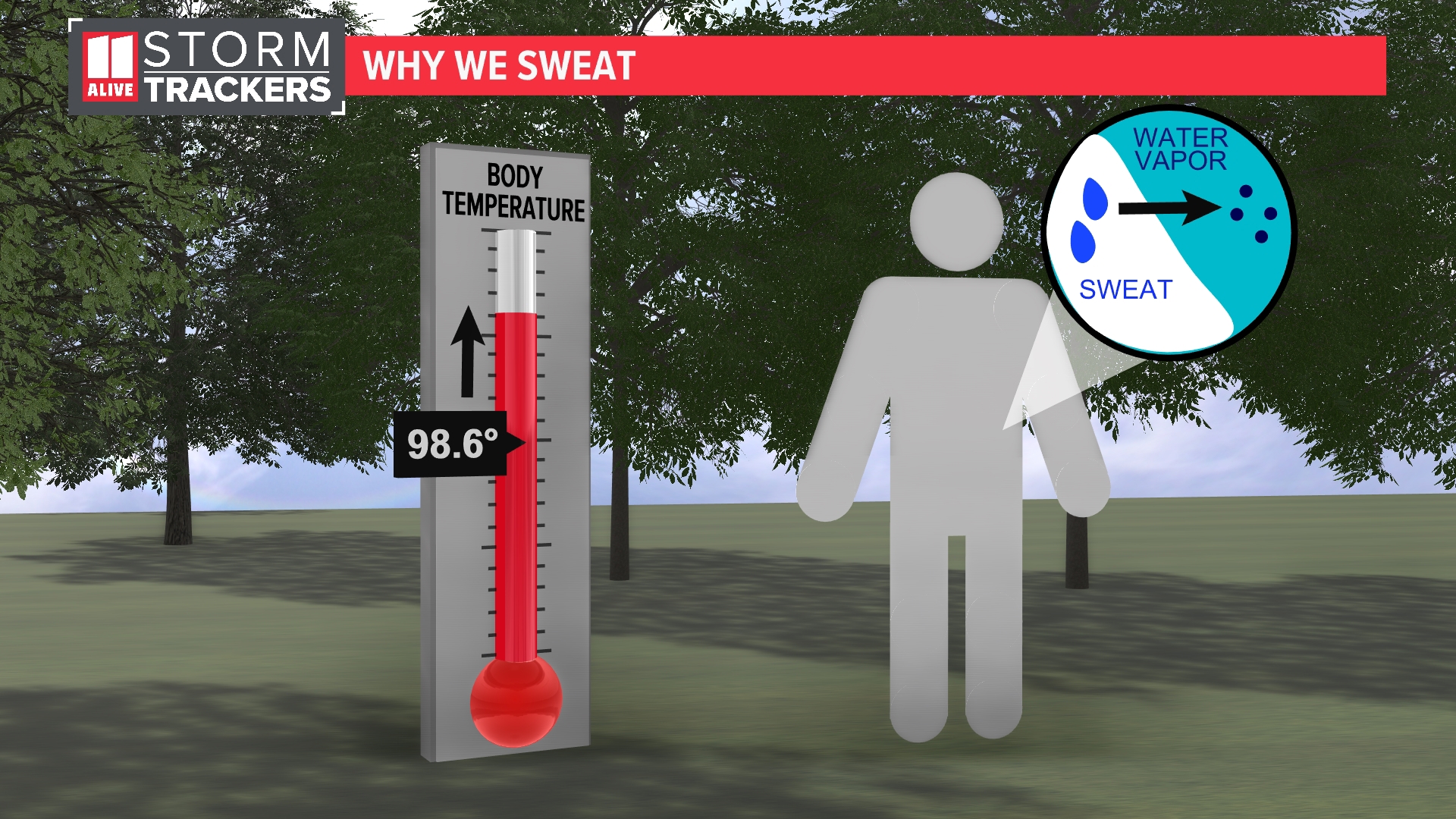ATLANTA — As summer temperatures rise, it's important to understand how your body works to keep you cool. Your body has a built-in air conditioning unit: sweat.
The normal body temperature is 98.6 degrees Fahrenheit, and when it gets hot outside, your body temperature begins to rise. To cool down, your body produces sweat.
This layer of moisture on your skin triggers a process called "evaporational cooling." When sweat evaporates, it cools the air around your skin, helping to lower your body temperature.
However, humidity can interfere with this process. In dry air, sweat evaporates quickly, cooling your body efficiently. In humid conditions, sweat evaporation slows down, causing your body to produce more sweat to try to cool down. This means your body has to work harder to cool itself on a humid day, leading to more sweating and potential heat-related illnesses.


The Science Behind Sweating
Sweat is mostly water, with small amounts of salt and other substances. When your body temperature rises, sweat glands release this liquid onto your skin. The evaporation process requires energy, which is taken from the heat of your skin, thereby cooling it down. This natural cooling mechanism is crucial for maintaining your body’s optimal temperature.


Challenges of High Humidity
Humidity levels significantly affect how effectively sweat can cool your body. In a dry environment, sweat evaporates quickly, allowing your body to cool efficiently. However, in a humid environment, the air is already saturated with moisture, making it harder for sweat to evaporate. As a result, your body continues to produce more sweat in an attempt to cool down, but the evaporation process is significantly slowed. This can lead to overheating, making it important to take extra caution in humid weather.


Recognizing Heat-Related Illnesses
With the increased risk of overheating during hot and humid weather, it’s crucial to be aware of the symptoms of heat-related illnesses and how to respond to them.


Heat Exhaustion:
- Symptoms: Feeling faint or dizzy, excessive sweating, cool, pale, and clammy skin, rapid, weak pulse, muscle cramps.
- Response: Move to a cool, air-conditioned place, drink water if possible, take a cool shower, or use a cold compress to help the body cool down.
Heat Stroke:
- Symptoms: Throbbing headache, no sweating, red, hot, dry skin, rapid, strong pulse, possible loss of consciousness.
- Response: Call 911 and seek immediate medical help.
Prevention Tips
To prevent heat-related illnesses, consider the following tips:
- Stay Hydrated: Drink plenty of water throughout the day, even if you don’t feel thirsty. Avoid alcohol and caffeinated beverages as they can lead to dehydration.
- Wear Appropriate Clothing: Opt for lightweight, light-colored, and loose-fitting clothing to help your body cool down.
- Limit Outdoor Activities: Schedule outdoor activities during the cooler parts of the day, such as early morning or late evening.
- Take Frequent Breaks: If you’re working or exercising outdoors, take frequent breaks in a shaded or air-conditioned area.
- Use Fans and Air Conditioning: Utilize fans and air conditioning to help keep indoor spaces cool.
Importance of Monitoring Vulnerable Individuals
Certain groups are more vulnerable to heat-related illnesses, including young children, the elderly and individuals with pre-existing health conditions. Monitor these individuals closely during extreme heat and ensure they stay cool and hydrated.
As temperatures soar, it’s crucial to recognize these symptoms and take appropriate actions to stay safe and cool to enjoy a safe and healthy summer season.

